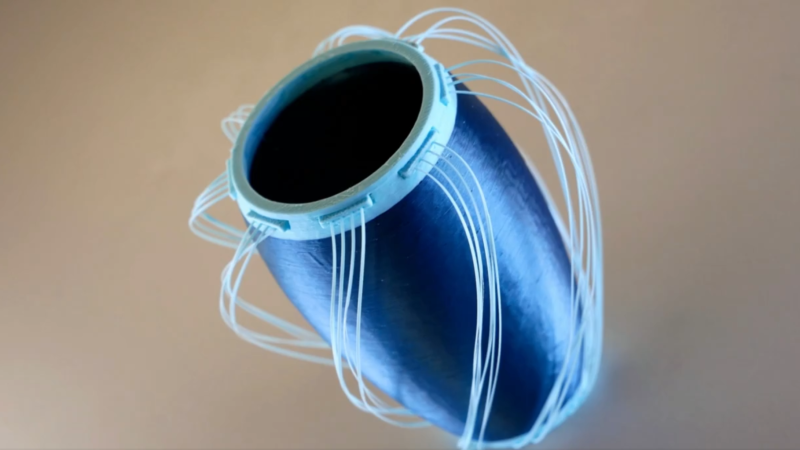[3DPrintBunny] is someone who continually explores new techniques and designs in 3D printing, and her latest is one she calls “pause-and-attach”, which she demonstrates by printing a vase design with elements of the design splayed out onto the print bed.

At a key point, the print is paused and one peels up the extended bits, manually attaching them to sockets on the main body of the print. Then the print resumes and seals everything in. The result is something that appears to defy the usual 3D printer constraints, as you can see here.
Pausing a 3D print to insert hardware (like nuts or magnets) is one thing, but we can’t recall seeing anything quite like this approach. It’s a little bit reminiscent of printing foldable structures to avoid supports in that it prints all of its own self-connecting elements, but at the same time it’s very different.
We’ve seen [3DPrintBunny]’s innovative approaches before with intentional stringing used as a design element and like the rest of her work, it’s both highly visual and definitely it’s own thing. You can see the whole process in a video she posted to social media, embedded below.
I tried out another 'pause-and-attach' type print today using some strings. The strings give it extra flexibility and allow me to add a twist😁 pic.twitter.com/gIytsb8NEm
— 3DPrintBunny (@3DPrintBunny) October 3, 2024
















As somebody who mostly prints geometric shapes (various parts for projects) I think this is very cool and has lots of potential applications to avoid printing tall skinny stuff that doesn’t lend itself well to separately printing and then gluing.
3DPrintBunny has consistently been an innovator in 3D FDM design, pushing conventional design aside and advancing the art of 3D printing. This is what happens when one woman decides to push the limits; absolutely spectacular designs.
I hope she patents that idea before Stratasys does
3D printers are open and hackable, this alone goes against the “modern” IT tech business philosophy. Imagine being able to do this with 2D printers – stop it in mid-print, tweak it somehow and then continue? Or replace its print head with a third party one? We’ve seen recently people hacking 2D printers just to circumvent various “protections” that some manufacturers use to get more money out of our pockets. Maybe 3D printer manufacturers will be like that one day, but I’d like to see someone start making 2D printers based on the same principles of openness as 3D ones… We’d probably be able to print on cloth, plastics, 3D objects etc.
The way things are going we’re much more likely to see it go the other way…
Interesting and innovative, but I can’t really think of any practical (non-aesthetic) applications for it.
Speed of printing comes to mind. Print the sides of things flat with a minimal tower, pause, fold (or assemble), then resume to seal the sides and finish the top.
This could also be used to reinforce the extruded filament layers with vertical strands to alter the tensile strength of the printed object.
I’m sure there are other possibilities, but those were the two obvious ones.